 An Interview with Andrea Scarantino (November 2014)
An Interview with Andrea Scarantino (November 2014)
Lisa Feldman Barrett is University Distinguished Professor of Psychology and director of the Interdisciplinary Affective Science Laboratory at Northeastern University. She received the NIH Director’s Pioneer Award in 2007, and was elected fellow to the Royal Society of Canada in 2012. Her research focuses on the nature of emotion from both psychological and neuroscience perspectives, and takes inspiration from anthropology, philosophy, and linguistics. She is one of the main champions of a new wave of emotion theories that go under the heading of psychological constructionism. Her specific brand of constructionism is called the Conceptual Act Theory, because it gives pride of place to situated conceptualization in the construction of emotion episodes. Dr. Barrett has published more than 160 scientific articles, and she is the editor of several influential collections, including the Handbook of Emotions (4th edition, in progress) and the recently published The Psychological Construction of Emotion. In 2014, she founded the Society for Affective Science (SAS) jointly with James Gross.
You grew up in Toronto, Canada. Do you come from a family of intellectuals? Did your parents encourage you to become an academic? What career did you envisage for yourself when you were growing up?

I was the first person in my extended family to attend university. I do not come from a family of intellectuals. My mother has a high school education, and my stepfather has an 8th grade education. We lived in a middle-class neighborhood but were “working poor.” The fact that I enjoyed school and did well was a constant source of tension in our house, as my stepfather was actively hostile to intellectual pursuits. When I was 16, he tried in vain to force me to quit school and get a full time job. My mother managed to be supportive of my education in several ways. As I entered high school, she felt it was important that I learn secretarial skills so that I would always be able to earn a living. Her own career began in a secretarial position and ascended into accounting and eventually managing an office.
Although I grew up in a working poor family, we lived in a middle class neighborhood. My friends’ parents were mainly professionals – physicians, lawyers, dentists, etc. So, by comparison, I grew up in a state of relative deprivation for most of my childhood and adolescence. In the social sciences, relative deprivation is associated with tremendous stress. This unrelenting stress, combined with the dynamics of my home life, and my family’s low socioeconomic standing profoundly shaped my early life experiences and goals going into high school and university.
My desire, at first, was to become a physician. I believed that a career practicing medicine would lift me out of poverty and provide the best protection from ever slipping back there. My high school boyfriend came from a family of physicians and during high school I spent a lot of time with his family, so I had several role models to learn from. And I grew up in a neighborhood that contained many Jewish families. It was still a pretty traditional thing at that time for Jewish kids (both young men and women) to go to medical school. But university was a time of transformation for me, as it is for many people. At first, I began taking pre-med classes and majored in biology.

After my first year, I switched my major to psychology, and I also began taking courses in anthropology and linguistics (and various other topics, such as history and astronomy). I was very taken with physical and cultural anthropology. For a while, I considered doing a PhD in anthropology but the uncertainties of being able to support myself financially kept me from considering it seriously. All through my undergraduate years, I was working two jobs to put myself through school. At a certain point, I realized that medicine was not the career for me, and I pursued a PhD in clinical psychology instead.
When did you start being interested in emotions and why?
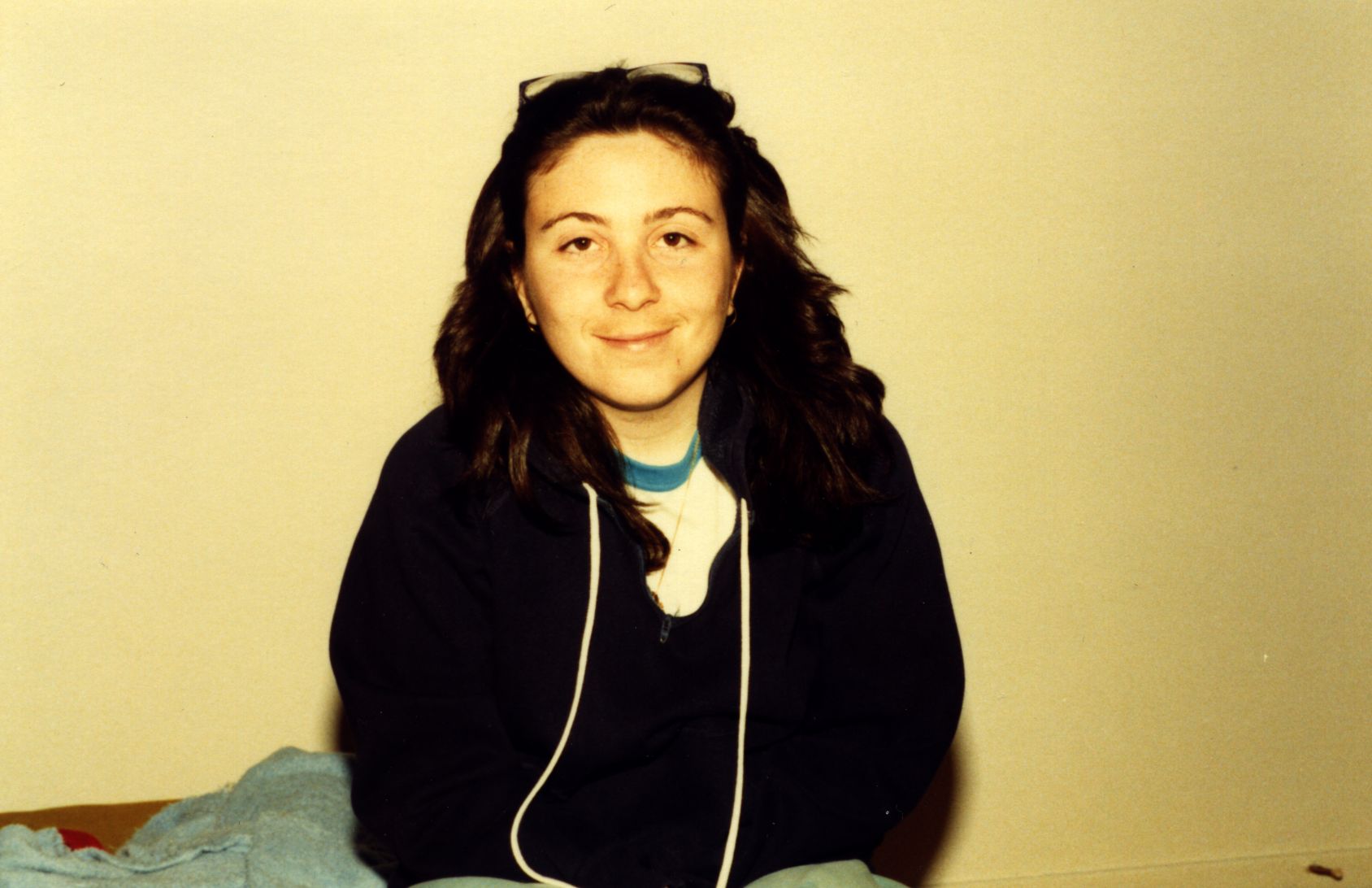
When I entered graduate school to study clinical psychology at the University of Waterloo, in Waterloo Ontario Canada , I was doing research on self-esteem using Tory Higgins’s Self-Discrepancy Theory: when people fail to live up to their own ideals, they are supposed to feel depressed, but when they fail to live up to what others’ believe they ought to be, they are supposed to feel anxious. Before running any new experiments, I tried to replicate this very standard finding in the literature. I failed. I could not replicate the finding. I tried again. And again I failed. I ran EIGHT experiments in my first three years of graduate school, using various methods, all of which failed.
After resisting the urge to throw myself under a bus, I took a close look at all the data and noticed a pattern: Most participants, when asked if they were anxious or depressed, had indicated that they felt both or neither; rarely did a participant report one or the other alone. So, the reports of anxiety and depression were so highly correlated that, given the reliability of the measures, there was no unique variance left in either measure to relate to anything else. This might sound like an uninteresting detail, but to me at the time, it was very curious. I wondered: can these participants distinguish anxiety from depression (one supposedly high arousal and the other low)? Is this attention to arousal an individual difference? Is there other information that is important? Is this variation in emotional granularity a more general phenomenon?
As I transitioned into my first academic position as an Assistant Professor of Psychology, I began to study emotional granularity more systematically as a

feature of emotional intelligence. I wanted to assess whether the finer grained distinctions between different feeling states that constituted emotional granularity were actually accurate representations of emotions. To assess accuracy, a scientist must compare a respondent’s reports to a set of objective (perceiver-independent) criteria. This led me to review the literature on the facial and body actions (a.k.a. “emotional expressions”), autonomic changes, and brain activity that were supposed to distinguish one emotion category from another. I certainly was not the first person to review this literature – every decade or so, a review of literature failed to turn up a distinctive “fingerprint” for each emotion category. My reviews merely built upon and extended the excellent reviews that were already in print. But these left the field littered with false dichotomies (Were emotions discrete or dimensional? Biological or social? Evolutionary or cultural?). And this left me with the realization that our field had a paradox to solve: How was it that people could experience and perceive distinct emotions like anger, sadness, and fear when after over a century of searching scientists could not discover consistent and specific fingerprints (patterns) to objectively diagnose the presence or confirm the absence of each one? Solving this paradox would reveal the nature of emotions.
You got your PhD in Clinical Psychology at the University of Waterloo in Canada in 1992. Why did you get your PhD in clinical rather than experimental psychology? And how do you compare the graduate education you received in Canada with the one offered by PhDs in the US?
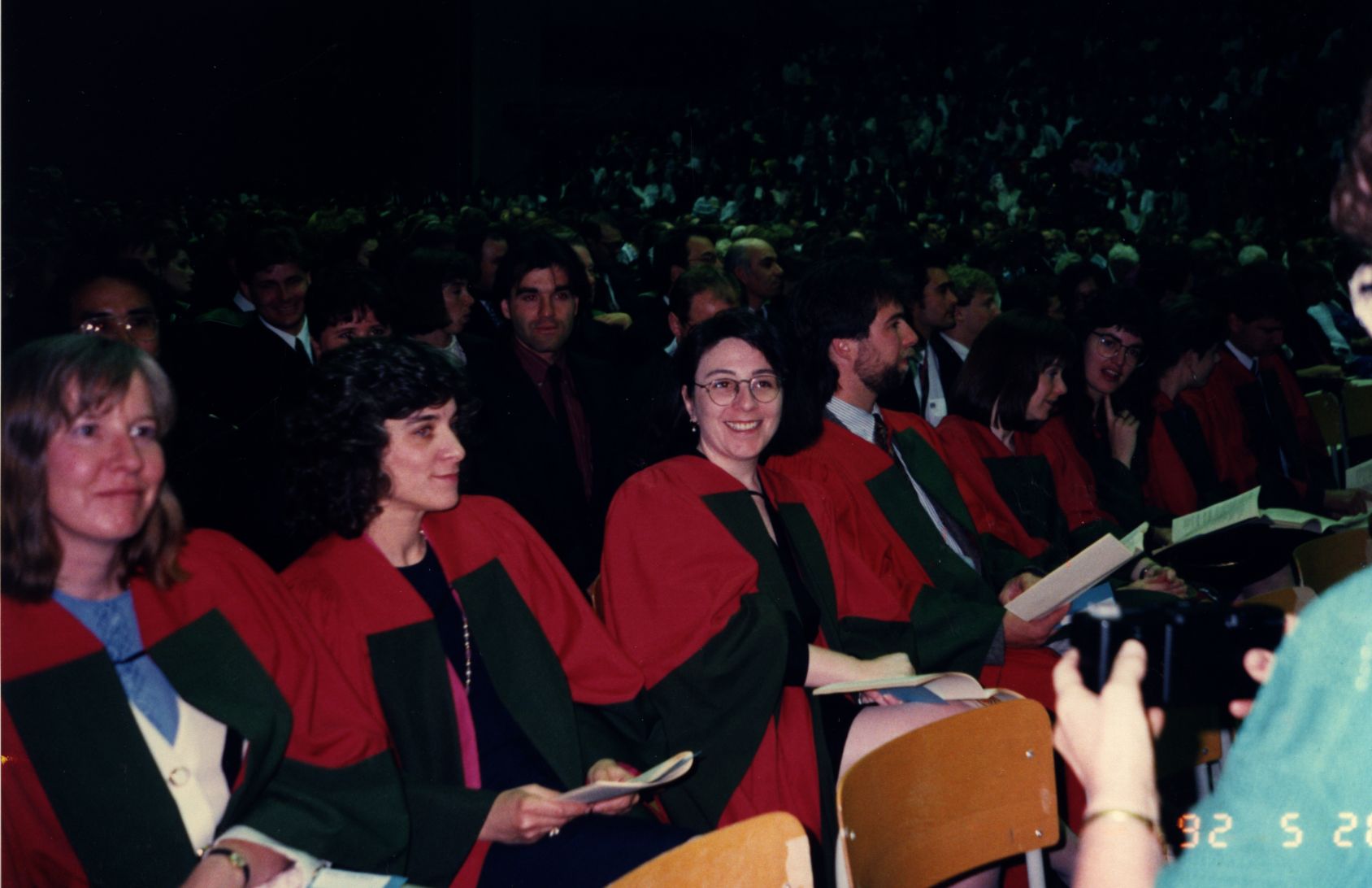
I became a clinical psychologist because it was the more pragmatic choice to make given my circumstance. When I was applying to graduate school, I had to stay in the Toronto area because I was about to be married (to my high school boyfriend – the one with all the physicians in his family). I applied to two graduate programs – clinical psychology at the University of Waterloo (which was the top ranked clinical program in Canada at the time) and cognitive psychology to work with Dan Schacter at the University of Toronto. I was accepted to both, but Dan was planning to move to U of Arizona, so I decided to go to U of Waterloo.
Graduate programs are so variable within both Canada and the US (and graduate training is so variable even across labs within a single department) that it is very difficult to compare across countries. I will say that I received excellent scientific training that has served me well over the past 20 years. I’m grateful for having been required to take a history of psychology course, a philosophy of science course, and a psychometrics course – such courses are often no longer offered in graduate programs, particularly the philosophy of science course. I also had the opportunity to take many statistics courses, which I found invaluable.
You are one of the world’s leading psychological constructionists, and you have not been shy about the need for radical theoretical change in emotion theory, focusing your critique in particular on basic emotion theory. Could you explain what psychological constructionism is, briefly trace its historical origin and say why basic emotion theory is no longer adequate?
Throughout the ages, the human mind has been understood using two intuitive theories within the Western philosophical and scientific tradition. In the first theoretical approach, the mind is understood as a collection of separate and independent abilities, or faculties, that are basic building blocks for all mental achievements. Each faculty is supposed to carve the mind at its natural joints, and can consequently be characterized as a natural kind (Barrett 2006a). Each faculty is also supposed to reflect a separate process, each with its own distinct and innate physical correlates (ranging from neurons in a certain brain region, a modular brain circuit or network, or a pattern of bodily correlates). This is known as faculty psychology. Basic Emotion Theory is a faculty psychology view of emotion. Certain appraisal theories have a faculty psychology flavor as well.
The second theoretical approach has been around for just as long as faculty psychology, although it was never really identified by a single, unifying label until Jim Russell and I started calling it psychological constructionism, and more recently we and our colleagues have taken to calling it constructionism (because it incorporates different types of construction at the neural, psychological and social levels). Psychological constructionism has almost always been proposed in a way that is embedded as a criticism of faculty psychology and only recently has developed into a more mature theoretical approach with its own set of novel questions, hypotheses, methods and analytic tools. Constructionism has two main hypotheses: (1) faculties are not separate and independent abilities but rather folk constructs that include highly variable instances, and (2) faculties are not basic building blocks of the mind but their instances are constructed from more basic, domain-general processes. As a result, either the search for natural kinds should take place at lower levels of analysis, i.e. the level of the processes that are the building blocks of the faculties, or it should be abandoned altogether.
Psychological construction has been with psychology from the very beginning of its history. Psychology emerged as a scientific discipline in the 19th century when the experimental methods from neurology and physiology were applied to search for the physical basis of the mental categories posited by faculty psychology. But criticisms of faculty psychology followed suit, as can be seen in works by William James and Wilhelm Wundt, who expounded clear psychological construction hypotheses. Emotion science is an excellent example of this historical divide between contrasting paradigms.
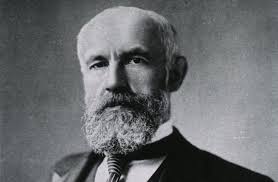
The idea that there are separate and independent “emotion faculties” can be found in the work of Herbert Spencer, Charles Darwin, Floyd Allport and William MacDougall. By the mid-20th century, this idea had been tested and rejected (e.g., Hunt, 1941; Duffy, 1934a, b; 1941; Dunlap, 1932; Harlow & Stanger, 1932, 1933). In the process, nascent psychological construction views were proposed, but not with sufficient detail that they could be tested. The “emotion faculties” view was then resurrected five decades later as “basic emotion” theory (Ekman, 1972; Izard, 1977; Tomkins, 1962, 1963), with striking resemblances to earlier versions of this idea (in particular, Allport to Tompkins and MacDougall to Panksepp). I have recently started to call this the “classical view” of emotions.
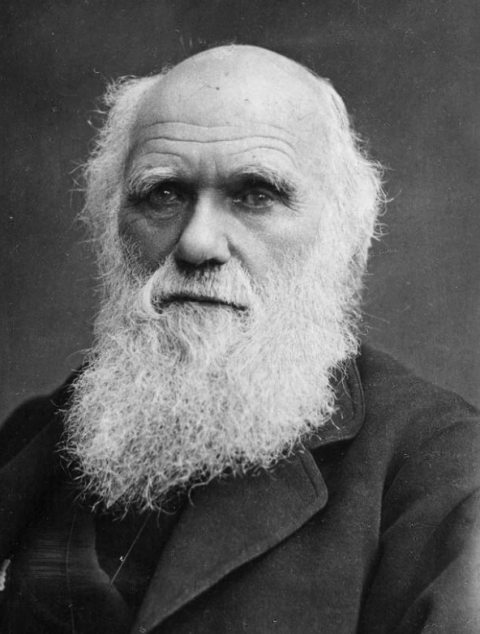
One version of appraisal theory also proposes a classical view of emotion. Appraisal views are united by the assumption that emotions are acts of meaning — a perceiver assigns value or meaning to an object that creates the emotional response. There are two versions of this influential research program that rest on what is meant by “appraisal” and “appraisal processes”. In some models (e.g., Arnold, 1960; Lazarus, 1991; Roseman, 1991, 2011; Scherer 2009), “appraisals” are specific mental processes that create meaning; an “appraisal process” is a cognitive mechanism that initiates specific emotional responses (e.g., an evaluation of threat produces fear). I have referred to these as “causal appraisal models” (Barrett, Mesquita et al., 2007; Gross & Barrett, 2011).
In other models (e.g., Clore & Ortony, 2013; Smith & Ellsworth, 1985), an “appraisal” is a way of experiencing the world during an emotion; an “appraisal process” refers to any process that produces this experienced meaning (e.g., to be afraid is to experience something as threatening, and appraisal processes are whatever creates that experience of threat). In these models, appraisals are mental contents (not processes) that are themselves caused by more basic, general mental processes that are available within any normally functioning human mind (the processes of perception, categorization, memory, etc.). In the past, we have referred to these as “constitutive appraisal models” (Barrett, Mesquita et al., 2007; Gross & Barrett, 2011). Causal appraisal models belong to the “classical view” and are highly similar to revised basic emotion theory (Ekman & Cordaro, 2011). All of them propose (more or less) that each emotion category is populated with instances that have some variation, but that most instances contain a diagnostic synchronized physical change that makes the emotion what it is (and that results from the pattern of appraisals that caused it).
After reviewing the scientific evidence, including the newer literatures on brain imaging, lesion work in humans and in non-human animals, and the electrical
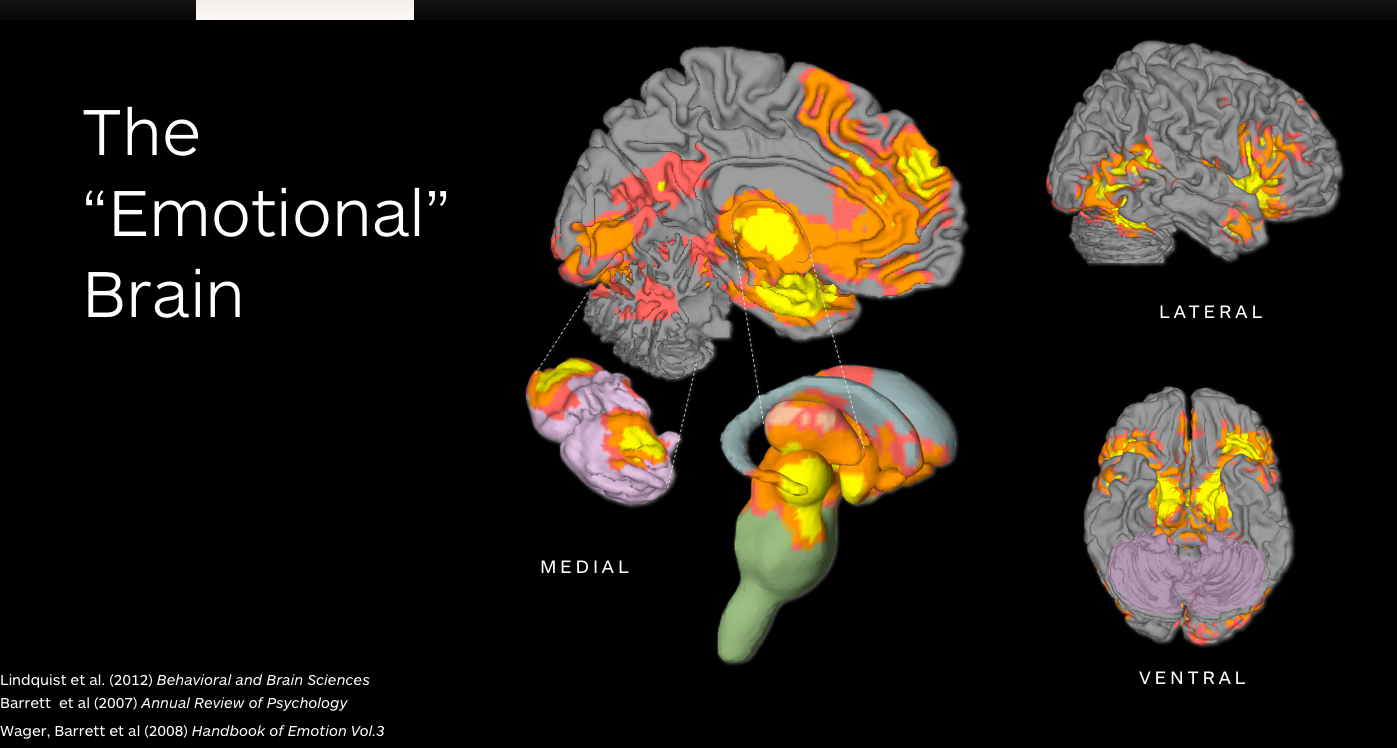
stimulation work in humans from the latter part of the 20th century and first decade of the 21st century, I have come to the conclusion that the classical view of emotion is disconfirmed by a growing number of empirical findings (e.g., Mandler, 1975; Barrett, 2006a; Barrett, Lindquist et al., 2007; Gendron et al., 2014a, b; Guillory & Bujarski, 2014; Lindquist et al., 2012; Ortony & Turner, 1990; Russell, 2003). This time, however, psychological construction theories are being offered that are sufficiently detailed to allow for their scientific evaluation (e.g., Barrett & Russell, 2015).
You ask “why basic emotion theory is no longer adequate”? In my view, basic emotion theory has never been adequate. It tells a compelling story wrapped in the protective cloak of Darwin, and it matches our everyday experiences and intuitions, but the actual scientific evidence for it is far from watertight. Nevertheless, scientific papers, textbooks, newspaper articles, documentaries, and science shows continue to describe the existence of universal “basic” emotions as a proven fact, disregarding the presence of a century of disconfirming evidence.
Your specific brand of psychological constructionism is labeled the Conceptual Act Theory. What are its core tenets, and what is the main empirical evidence for it? Also, which features of other theories of emotions does CAT take on board?
The Conceptual Act Theory is less than a decade old, so I am not sure that the “main” empirical evidence for it has even been collected yet. But there certainly already is a significant, and growing, amount of evidence consistent with the theory. Due to space constraints on this interview, I will only be able to provide readers with references where the relevant empirical evidence is spelled out. CAT has four central tenets:
Variation: an emotion word like “anger” or “fear” names a category that is a population of instances that vary significantly in their physical nature, because individual emotional episodes are tailored to the requirements of the immediate situation. As a result, the instances within emotion categories are heterogeneous, and they include both typical and atypical instances that differ in important ways reflecting different situational demands (Wilson-Mendehnhall 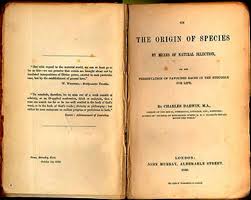 et al., 2011; Wilson-Mendenhall et al., 2014). This contrasts with the faculty psychology view of emotion categories as being characterized by instances that share physical signatures with a limited degree of variation. The Conceptual Act Theory uses population thinking (inspired by Darwin’s On the Origin of Species) which assumes that a category can be composed of individuals with unique properties and features so that “average” or “typical” individual of the category can only be described in statistical terms (Mayr, 2004). This means that the instances of an emotion category share no necessary and sufficient features, and the prototype of the category does not have the most frequent or typical properties of its instances, but instead is a stereotype that represents the ideal or goal of the category. Our background assumption, which follows Larry Barsalou’s influential work on this matter, is then that emotion categories are goal-based categories.
et al., 2011; Wilson-Mendenhall et al., 2014). This contrasts with the faculty psychology view of emotion categories as being characterized by instances that share physical signatures with a limited degree of variation. The Conceptual Act Theory uses population thinking (inspired by Darwin’s On the Origin of Species) which assumes that a category can be composed of individuals with unique properties and features so that “average” or “typical” individual of the category can only be described in statistical terms (Mayr, 2004). This means that the instances of an emotion category share no necessary and sufficient features, and the prototype of the category does not have the most frequent or typical properties of its instances, but instead is a stereotype that represents the ideal or goal of the category. Our background assumption, which follows Larry Barsalou’s influential work on this matter, is then that emotion categories are goal-based categories.
Core Systems: each instance of an emotion category is constructed from the interactions of domain-general core systems not specific to emotions, including core systems for interoception, exteroception, conceptualization, attention and executive control, and so on. These core systems are what I have previously referred to as the “ingredients” of mental states (cf. Barrett, 2009), which are combined into different emotion instances according to situation-dependent “recipes”. For example, there is a set of networks that are structurally intrinsic to the human brain consistently engaged across a variety of different emotion categories, and outside of the emotion domain (Barrett & Satpute, 2013; Lindquist et al., 2012). Consistent with these ideas, the Conceptual Act Theory also incorporates the concept of degeneracy, or the idea that a given instance of emotion can be constructed in multiple ways, with multiple recipes (i.e., many neural representations can produce one functional outcome; Edelman & Gally,2001). This contrasts with the faculty psychology view of a dedicated neural circuit corresponding to each emotion category or corresponding to each cognitive evalution that causes an instance of an emotion category.
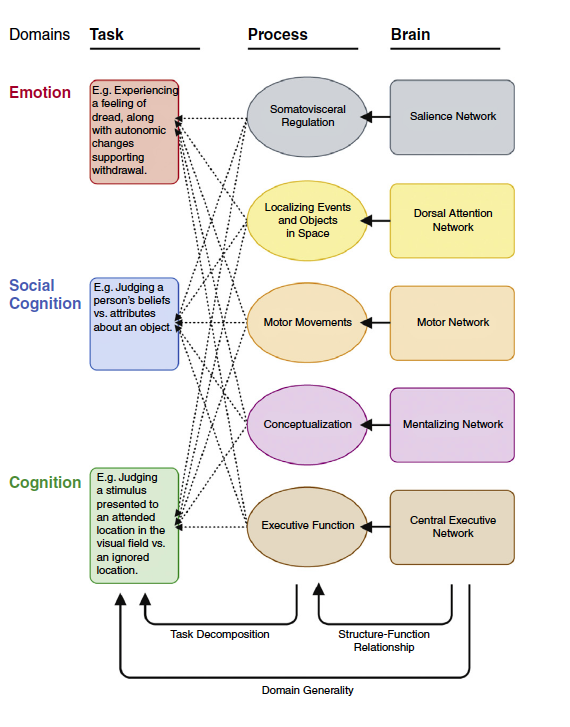
psychological faculties such as fear, anger, etc. to compartmentalized
brain regions or even to individual networks. Instead, our efforts
should be focused on modeling responses to experimental tasks as
high-dimensional brain states (reflecting the engagement of networks,
their internal operations, and their interactions)
Emergentism and Holism: emotional episodes cannot be deconstructed and reduced either to specific neurons, swaths of brain tissue, or networks, as faculty psychology would have it, or to the domain general systems whose interaction is responsible for producing emotional episodes. Rather, emotions are emergent phenomena which result from interacting core systems in the same way in which water molecules result from the combination of hydrogen and oxygen molecules. A corollary of emergentism is holism, the idea that we can only understand the workings of each core system in the context of its dynamic co-activation with other core systems. For example, intrinsic brain networks interact dynamically to predict the intensity of different varieties of sadness, fear, and anger over time (Raz et al., under review). Furthermore, using pattern classification on our meta-analytic database, we have been able to identify a pattern to identify each emotion category, where the pattern is described as a set of interactions between intrinsic networks. It is tempting to believe that each pattern is the biomarker or neural essence of each category. In fact, this is how many scientists tend to interpret pattern classification (e.g., that all instances of an emotion category (e.g., anger) could be represented by small, dedicated population of neurons represented by its pattern). Unfortunately, pattern classification does not actually work like this.
Each activation map correctly classified as anger (be it for a person, as in Kassam et al., 2013, or for a study, as in our meta-analysis), does not have to contain the entire pattern identified for the category anger; it only has to contain a set of voxels that is closer to this pattern than to the pattern for any other emotion category. For example, each map could contain unique subsets of the pattern. Each of these subsets is therefore sufficient to instantiate anger, but not necessary for it, in the sense that another episode of anger may involve another non-overlapping subset of voxels. Therefore, it is not correct to claim that the pattern classifier identifies a small dedicated set of voxels that corresponds to each emotion (e.g., anger). The logic is similar to studies of prototype categories. Each instance of the category has some set of features that are sufficient for category membership, but none of them are necessary for category membership, and they don’t co-occur anywhere but in the prototype (Posner & Keele, 1968). As a consequence, our study shows that different patterns of network interactions represent a summary of the activations for each emotion category, and each instance of emotion classified within that category contains either some of that pattern or something closer to it than to the other patterns.
Social Reality: the key proposal of the Conceptual Act Theory is that an instance of emotion emerges when a momentary array of sensations from the world  combined with sensations from the body is categorized as, say, anger or fear as a situated conceptualization. For instance, a change in blood pressure, or a smile for that matter, becomes anger when it is categorized as such in the course of a situated conceptualization. Via categorization, sensations acquire functions that are not intrinsic to them, which is the idea at the heart of emergentism. For example, a person can freeze when faced with danger. But fear is something more than just the act of freezing with its concomitant bodily changes. When a human categorizes a suite of physical changes as fear, this perception provides the physical state with new functions that intrinsically shape what the person will do next and how others will react to that person. This is why a brain circuit for freezing is not a brain circuit for fear: what a mere focus on freezing and its concurrent physiological changes misses is the way in which the act of categorization endows freezing with a social meaning that is crucial for understanding how it will affect the subsequent interaction between the emoter and the world (for further discussion, see Barrett, 2012).
combined with sensations from the body is categorized as, say, anger or fear as a situated conceptualization. For instance, a change in blood pressure, or a smile for that matter, becomes anger when it is categorized as such in the course of a situated conceptualization. Via categorization, sensations acquire functions that are not intrinsic to them, which is the idea at the heart of emergentism. For example, a person can freeze when faced with danger. But fear is something more than just the act of freezing with its concomitant bodily changes. When a human categorizes a suite of physical changes as fear, this perception provides the physical state with new functions that intrinsically shape what the person will do next and how others will react to that person. This is why a brain circuit for freezing is not a brain circuit for fear: what a mere focus on freezing and its concurrent physiological changes misses is the way in which the act of categorization endows freezing with a social meaning that is crucial for understanding how it will affect the subsequent interaction between the emoter and the world (for further discussion, see Barrett, 2012).
This way of understanding emotion episodes has a number of important theoretical consequences. I will briefly mention four. First, embodied concepts, as a way of organizing past experience, play a very central role in creating experience. The brain uses its store of conceptual knowledge to create emotional instances. Think of the brain as a predictive organ. It is continually using its store of embodied concepts to predict upcoming sensory inputs from the body and the world, and, in doing so, it categorizes them and creates meaningful experiences that we call situated conceptualizations. So the brain is not constructing emotion in a reactive way. It is constructing emotional instances based on embodied conceptual knowledge and held in check by incoming sensory inputs from the body and the world.
Second, CAT explicitly proposes that emotional experience and emotion perception are constructed in exactly the same way, namely by enacting conceptual knowledge during categorization to construct situated conceptualizations with arrays of sensations. Third, there is no sharp distinction between emotion generation and emotion regulation, in the sense that the very act of categorization that instantiates the emotion marks the beginning of the regulatory process of deciding what to do about it. Fourth, there is no distinction between an emotional state (a set of behaviors and physiological responses) and the experience/perception of that state. All emotional episodes are constructed as perceptions – they are the result of the way that the brain makes meaning of incoming sensory inputs from the body and the world.
The Conceptual Act Theory shares the following assumptions with other theories:
- Like basic emotion theories, the Conceptual Act theory is an evolutionary view of emotion. The CAT takes its inspiration from the conceptual innovations presented in Darwin’s On the Origin of Species, rather than from Darwin’s The Expression of Emotion in Man and Animals (which is a conceptual throwback when compared to Origins; see Barrett, 2013; Barrett, forthcoming). Instead of assuming that natural selection sculpted domain-specific mechanism for each emotion (a position which suffers from the weaknesses of the “adaptationist programme” chastised by Gould and Lewontin, 1979), we hypothesize that the brain’s functional architecture contains domain-general processes that interact and from which emotions emerge. In principle, domain-general processes are favored by evolution for their efficiency and flexibility (Laland & Brown, 2002).
- Like basic emotion theory, our view is that emotional episodes can contain species-general elements (actions that all species share, such as freezing, fleeing, or fighting); in our view, however, there is no one to one mapping between a specific behavioral adaptation (e.g., freezing) and an emotion category (e.g., fear) (Barrett, 2012; see also Gross & Canteras, 2012). Furthermore, species-general processes are not sufficient for emotion; species-specific processes that exist only in humans (or perhaps in limited form in great apes), such as abstract emotion concepts and language, are also required.
- Like “appraisal” approaches, the CAT views emotions as acts of meaning making. The CAT hypothesizes that emotions, like all mental states, arise through the continuous process of perceivers making meaning from the sensory input that they take in from the internal world of the body and the external world of physical surroundings. The CAT is more consistent with constituative appraisal theories than causal appraisal theories.
- Like other classical views, the CAT is a functional account of emotions (Barrett, 2012). An emotion is enacted when embodied conceptual knowledge is brought on line to shape the perception of a physical state, binding that physical state to an event in the world (so that the physical changes in the body are experienced as “about” something in the world). A body state or an action has physical functions (e.g., changes in respiration might regulate autonomic reactivity or widened eyes increase the size of the visual field), but these events do not intrinsically have functions as an emotion; events are assigned those functions in the act of categorizing them as emotion during the construction of a situated conceptualization.
- Like social construction theories, the CAT also acknowledges to the importance of social situations. If the conceptual system for emotion is constituted out of past experience, and if past experience is largely structured by people within a cultural context, then the vocabulary of emotion categories that develop, and the population of instances within each category, will be culturally relative. In this way, the Conceptual Act Theory also has the potential to become a deeply culturally-sensitive view of emotion. Culture is not an independent variable with emotion as the dependent variable – culture does not cause emotion. Instead, emotions are performances of culture, enacted and structured through the conceptual knowledge that is enacted and transmitted as part of socialization and acculturation. Emotions are events that function as bids to structure relationships and interactions.
You can read more about these hypotheses, as well as how they are similar to and different from other theories of emotion, in the following papers:
Barrett, L.F. (2011). Bridging token identity theory and supervenience theory through psychological construction. Psychological Inquiry, 22, 115-127.
Barrett, L. F. (2011). Was Darwin wrong about emotional expressions? Current Directions in Psychological Science, 20, 400-406.
Barrett, L. F. (2013). Psychological construction: A Darwinian approach to the science of emotion. Emotion Review, 5, 379-389.
Barrett, L. F. (2014). The conceptual act theory: A précis. Emotion Review, 6, 292-297.
Barrett, L. F. (2015). Ten common misconceptions about the psychological construction of emotion. Chapter to appear in L. F. Barrett and J. A. Russell (Eds.), The psychological construction of emotion. New York: Guilford.
Barrett, L. F. (2015). Construction as an integrative framework for the science of emotion. Chapter to appear in L. F. Barrett and J. A. Russell (Eds.), The psychological construction of emotion. New York: Guilford.
Jim Russell, another major proponent of psychological constructionism, distinguishes between having an emotion – e.g. being afraid – and having a meta-experience of emotion – e.g. categorizing oneself as afraid. This opens the door for categorization omissions (having emotions without categorizing them) and mis-categorizations (having emotions and categorizing them wrongly). Are these possibilities on your theory? For instance, can one undergo an episode of jealousy without realizing it, at least while having the episode? Can one self-categorize as angry while being afraid instead, as alexithymic patients are said to do? Finally, can emotions ever be unconscious on your theory?
According to the Conceptual Act Theory, every waking moment of your life, your brain categorizes sensations from the outside world and from inside your body using knowledge from past experience. This categorization process constructs all perception and experience, including perceptions and experiences of emotion. In the Conceptual Act Theory, the hypothesis is that without the categorization of sensations, an emotion does not emerge. Similarly, uncategorized visual sensations produce experiential blindness (see Barrett, 2012); uncategorized sounds are heard as noise instead of music or words. Most of the time, the categorization process is automatic, effortless, and proceeds with no sense of agency. So most of the time, it is possible to experience emotion without explicit awareness of being engaged in an act of categorization superimposed on the array of sensations (this is true even though emotion word knowledge is more accessible during the categorization process).
The Conceptual Act Theory makes a distinction between the on-going momentary categorizations that create phenomenal consciousness (the content of what you experience), and the self-categorizations that occur when people engage in reflective consciousness (your ability to explicitly label and report on what you experience). This is roughly similar to Ned Block’s distinction between phenomenal consciousness (the way it is like to be in a mental state) vs. access consciousness (the reportability of the mental state). I am not sure if this is the difference that Jim is trying to capture with his distinction, but in the Conceptual Act Theory, the categorization that creates the phenomenal experience and the categorization that creates the self-labeling (on the occasions when it occurs) need not be the same event.
Sometimes people ask “can emotions be unconscious?”. I would answer – “only if visual perceptions can be unconscious.” If you can see unconsciously, or hear unconsciously, then it is also possible to emote unconsciously.
One final thought: To my knowledge, alexithymics don’t self-categorize as one emotion (e.g., anger) while being in a different emotional state (e.g., fear). Alexithymia is defined as a difficult experiencing emotions. People who describe themselves as alexithymic report a lot of somatic (bodily) sensations like stomach aches, as well as general affective feelings (valence and arousal), but they have impoverished mental representations for emotion. Recent evidence suggests that an impoverished conceptual system for emotion is at the core of alexithymia. As a consequence, these folks fail to categorize bodily sensations as emotional and instead experience them as undifferentiated affect or as bodily symptoms. Moreover, I don’t know how anyone can scientifically defend a statement like “this person reported feeling angry but really he was anxious.” A statement like that is scientifically meaningful if, and only if, there are objective (perceiver-independent) criteria to verify the presence of anger and anxiety. To my knowledge, no such criteria have been identified yet (see my response to your next question).
If the situated application of concepts is essential to having emotions, as CAT suggests, can animals and infants have emotions? If not, how would you describe what many would characterize as the anger of a restrained infant or as the fear of a rat in a conditioning experiment?
A century of study reveals that questions phrased like, “Is a restrained infant angry?” and “Can a rat feel fear?” cannot be answered in a scientifically meaningful way. I say this because to answer them accurately, we must be able to compare an infant’s behavior or a rat’s behavior to an objective (perceiver-independent) set of criteria that can be used to verify when a person or non-human animal is angry or fearful. How do we know that when an infant struggles she is angry? How do we know that when a rat freezes it is afraid? The only way to know for sure is if there are criteria for each emotion that are consistently and unambiguously related to each behavior of relevance.
To my knowledge, there is no set of behavioral or biological measurements that can specifically verify the presence or absence of any emotion. I have to admit that it continues to puzzle me that people find this a controversial claim. A quick look at the literature reveals that for every finding consistent with the classical view of emotion, there are dozens that disconfirm it. For example, there is no clear and consistent brain marker for any category of emotion. Scientists can really no longer claim that the amygdala is the seat of fear, or that it supports “fear learning” per se (although clearly certain amygdala nuclei play a role in threat and safety learning).
 A rat freezes when it is exposed to a tone that was previously paired with a shock, but only when it is tested in the small box, and only when the tone has a certain loudness. If the rat is restrained in the small box when it hears the tone (which should not matter because it is about to freeze anyway), its heart rate goes DOWN, not up. If the rat can escape, it will run away. If the rat is cornered and the threat is not ambiguous, it will fight. And not all of these behaviors require an amygdala. Freezing, fleeing, and defensive aggression are all responses to potential danger, so which corresponding circuit is the fear circuit? Is this evidence of many fear circuits, as some scientists want to claim? If so, then we must grapple with the scientific value of the category “fear,” beyond its obvious utility for communicating research findings to people who do not study emotion.
A rat freezes when it is exposed to a tone that was previously paired with a shock, but only when it is tested in the small box, and only when the tone has a certain loudness. If the rat is restrained in the small box when it hears the tone (which should not matter because it is about to freeze anyway), its heart rate goes DOWN, not up. If the rat can escape, it will run away. If the rat is cornered and the threat is not ambiguous, it will fight. And not all of these behaviors require an amygdala. Freezing, fleeing, and defensive aggression are all responses to potential danger, so which corresponding circuit is the fear circuit? Is this evidence of many fear circuits, as some scientists want to claim? If so, then we must grapple with the scientific value of the category “fear,” beyond its obvious utility for communicating research findings to people who do not study emotion.
The case of fear is no different than the case of any other emotion category. In good humor and with the best of intentions, I challenge anyone to show me a pattern of objective (perceiver-independent) behavioral and biological criteria, culled from the scientific literature, that is sufficiently consistent and specific enough to diagnose the presence of an emotion (and only that emotion). The best that anyone can do in that regard is to provide a pattern that is hypothesized diagnostic, and then to attempt to explain away all the disconfirming evidence with a variety of caveats (we need better measures, better experiments, more precise definitions, etc.). Some of the caveats might have merit, but the fact still remains that our field takes the biomarker issue on faith despite our collective failure to find a single reliable set of biomarkers for emotions.
To assess validity and accuracy in our experiments, we routinely use perceiver-dependent measures as a substitute for the perceiver-independent measures we 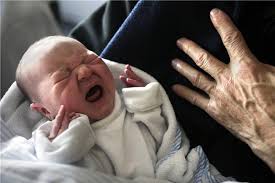 lack. That is, we use one person’s judgment to validate another person’s report (e.g., in the study of emotion perception, we compare perceivers’ reports to each other, or to what the experimenter expected). From a scientific standpoint, these are not really measures of accuracy or validity. As measures of consensus, they are more like reliability. Furthermore, we typically use criteria that are stipulated, rather than discovered. For example, in the study of emotional experience, we compare self-reports or physiologic measurements to what the experimenter expected based on his or her a priori hypothesis of what is expected for a given emotion category, not to some perceiver-dependent or objectively derived set of criteria that have been discovered.
lack. That is, we use one person’s judgment to validate another person’s report (e.g., in the study of emotion perception, we compare perceivers’ reports to each other, or to what the experimenter expected). From a scientific standpoint, these are not really measures of accuracy or validity. As measures of consensus, they are more like reliability. Furthermore, we typically use criteria that are stipulated, rather than discovered. For example, in the study of emotional experience, we compare self-reports or physiologic measurements to what the experimenter expected based on his or her a priori hypothesis of what is expected for a given emotion category, not to some perceiver-dependent or objectively derived set of criteria that have been discovered.
Since the criteria we routinely use are perceiver-dependent, a properly formed question must take the perceiver into account: “To an adult human perceiver, is the infant angry when restrained and is the freezing rat afraid?”. This is a very different question from “what do the infant and the rat experience?” Here is how the Conceptual Act Theory would answer such questions. From the perspective of an adult human perceiver who has concepts for anger and fear, then the answer is yes, the restrained infant is angry and the freezing rat is afraid.
From the perspective of the rat, the answer is no. The rat does not experience fear. Non-human animals have the circuitry for affect, and they also can learn concepts and form categories from them. But the question is whether they have the brain circuitry available to learn the kind of concepts that emotion concepts are, and whether there is any behavioral evidence that they can acquire these types of concepts. And the answer seems to be no (although great apes might have some very limited ability).
From the perspective of the infant, the answer is more nuanced. Newborns are like non-human animals – they have the circuitry for affect, and they also can learn concepts and form categories from them. By the time infants are four to six months old, the brain is starting to develop the relevant circuitry to learn the kind of concepts that emotion concepts are, and statistical learning experiments have shown that infants of this age use words that they hear as the foundation for learning new concepts that are similar in type to emotion concepts. So, from the perspective of the infant, anger might occur when restrained as soon as the concept of anger has been acquired. Before that, there is only activated negative affect (from the infant’s perspective).
In a 2011 paper entitled “Context in Emotion Perception”, co-athored with Batja Mesquita, and Maria Gendron, you argue that context is crucial for the perception of facial expressions. Which contextual cues are most relevant for facial expressions?
I would phrase the question differently. From the perspective of the Conceptual Act Theory, people are making meaning of sensory input from the world and from their own bodies. This means that an emotion perception is constructed not only from another person’s facial actions, but from their bodily movements, vocal movements, the social setting, the environmental background, the perceiver’s own homeostatic state, and so on.

In other words, faces and bodies are continuously moving, but we perceive these actions as events that have a beginning and an end (we engage in event perception), and we infer that the actions are caused by a mental state (the emotion). In social psychology, this has been called action identification, ordinary personology, and just plain person perception (Vallacher & Wegner, 1987; Gilbert, 1998; Bruner & Tagirui, 1954; for a discussion, see Barrett, 2006b).
Moreover, because during social interactions we tend to look at each other’s faces when we interact, we are accustomed to think of the face as the most important feature in emotion perception, with everything else serving as context to the face. Yet there is scientific evidence that this is not the case. Research by Aviezer, de Gelder, and Russell & Widen has shown time and time again, in both children and adults, that when other perceptual features (e.g. the body) are pitted against a face in an emotion perception task, the face loses. This is because information in a face is more ambiguous and therefore perceptions of the face are more malleable. Also, as young infants learn to perceive affect in others, they learn it from multimodal cues first, and only later acquire the capacity to perceive it in a face alone (and only sometime after that they can perceive discrete emotions).
How have fMRI studies, currently the most widely used tool for the study of the emotional brain, been helpful to figure out how the brain implements emotions? What do you make of Panksepp’s claim that direct electric stimulation of the brain has shown the existence of at least seven basic networks in the brain shared across mammalian species? What is your current view of the architecture of the emotional brain?
Brain imaging methods have been instrumental in changing our understanding of how the human mind works, and therefore have been transformative in formulating better questions and experiments about the nature of emotion. We have learned, for example, that the brain does not lie dormant, waiting to respond to stimuli from the external world, but instead is actively building and testing generative models of the world in anticipation of incoming sensory input. From the brain’s perspective, “the world” includes not only the exteroceptive sensations from the external world, but also the interoceptive sensations from the “internal world” of the body.
My view is that the brain achieves this generative model-building not with a system of “mental organs” corresponding to independent modules for each mental faculty, but with its integrated architecture of domain-general networks that are intrinsic to the architecture of the human brain. As a consequence, there is no “emotional brain” separate from the “social brain” or the “cognitive brain” (for a discussion see Barrett & Satpute, 2013). Every person has one brain, populated with a set of intrinsic networks, and these networks work together to construct mental events that we give psychological names to as emotions, cognitions, and perceptions.
Brain imaging studies, as useful as they have been, suffer from a variety of important limitations. Scientists often focus on the spatial and temporal imprecision

of fMRI, and of course I would not disagree. But there are other concerns that I think deserve attention. For example, most studies are tremendously underpowered, having too few trials with too few participants. As a consequence, the brain can appear to be more compartmentalized in function than it actually is (when assessed by other imaging techniques, or when compared to those fMRI studies conducted with sufficient power).
Within many experiments, signals are analyzed as discrete, independent events (trials), rather than as a continuous stream with temporal dependencies at
different time scales. Usually scientists design their experiments to look for a single brain:mind correspondence, rather than acknowledging the possibility that there could be several different neural representations corresponding to a single behavioral or mental outcome (this is the concept of degeneracy). And in the science of emotion, scientists tend to focus their inquiry on only the most stereotypic stimuli and scenarios, all but ignoring the tremendous variation in emotional life. Only a handful of experiments have explored how instances of emotion vary within a category. And none have mapped this variation on a person-by-person basis. These issues, and others like them, are just beginning to be addressed, and they will refine our understanding of how the brain creates the mind, more generally, and how the brain creates emotional experiences and perceptions, more specifically.
Rather than repeat my comments about Panksepp’s claims (which I outlined in detail in Barrett et al., (2007) pages 300-301), I would point readers to an excellent book by the pioneering neuroscientist Eliot Valenstein, called Brain Control, in which he wrote:
“The impression exists that if electrodes are placed in a specific part of the brain, a particular behavior can inevitably be evoked. Those who have participated in this research know that this is definitely not the case. In a large percentage of cases, animals do not display any specific behavior in response to stimulation, even though great care may have been exerted to position the brain electrodes with as much precision as possible. Even in rats, where the behavior is more stereotyped than in monkeys and man, brain stimulation produces very variable results” (Valenstein, 1973, p. 88)
Although Valenstein wrote these words in 1973, nothing that has been published since then would contradict them. I refer interested readers to a recent paper by Guillory & Bujarski (2013) summarizing the past 60 years of intracranial electrophysiological research on emotion, which provides support for the Conceptual Act Theory.
You have also written a lot on the impact of aging and sex differences on emotions. What happens to our emotions as we grow older? Do the emotions of males and females differ, and if so how?
 Generally speaking, people report being happier in everyday life as they age (at least in US samples), even though increasing age comes with greater risk of illness and diminished capacities. This phenomenon is called the “positivity effect.” Older adults tend to prefer low arousal, pleasant experiences (whereas younger adults prefer higher arousal, pleasant experiences), and they selectively pay attention to and remember pleasant information, creating a comforting “niche” for themselves. Nonetheless, there is more variation here than meets the eye. For example, some studies have found that only older people who are easily able to suppress unwanted material, and to shift their attention from one thing to another, can benefit from attentional maneuverings to experience more pleasant feelings. Some studies find that as people become progressively more elderly, they begin to again report more negativity. And older people who describe themselves as “neurotic” don’t report any change in their emotional experiences compared to when they were younger (they don’t report more positivity or less negativity). Excellent work has been done by Isaacowitz, Mather, and Carstensen in this area.
Generally speaking, people report being happier in everyday life as they age (at least in US samples), even though increasing age comes with greater risk of illness and diminished capacities. This phenomenon is called the “positivity effect.” Older adults tend to prefer low arousal, pleasant experiences (whereas younger adults prefer higher arousal, pleasant experiences), and they selectively pay attention to and remember pleasant information, creating a comforting “niche” for themselves. Nonetheless, there is more variation here than meets the eye. For example, some studies have found that only older people who are easily able to suppress unwanted material, and to shift their attention from one thing to another, can benefit from attentional maneuverings to experience more pleasant feelings. Some studies find that as people become progressively more elderly, they begin to again report more negativity. And older people who describe themselves as “neurotic” don’t report any change in their emotional experiences compared to when they were younger (they don’t report more positivity or less negativity). Excellent work has been done by Isaacowitz, Mather, and Carstensen in this area.
In Western cultural contexts, men and women believe themselves to differ emotionally. At first blush, the findings look pretty straightforward, and tend to run along the lines of gender stereotypes. Using general, retrospective self-report measures, women describe themselves as more emotional than do men, but in moment-to-moment reports, such as those used in experience-sampling protocols, no sex differences are observed (Barrett et al., 1998). In emotion perception studies, female targets who are posing a stereotyped emotional expression are perceived as dispositionally more emotional (they are perceived as “emotional people”), whereas male targets are perceived as merely responding to a situation (they are perceived as “having a bad day”) (Barrett & Bliss-Moreau 2009).
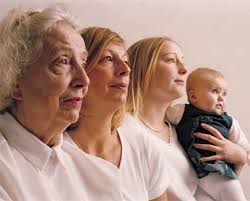 But a closer look starts to reveal more nuanced, interesting patterns. For example, men and women viewing images from the International Affective Picture System reported feeling similar levels of subjective arousal, but there were relatively different neural correlates associated with these reports. For women, we observed relatively stronger correlations between subjective reports of arousal and the network associated with the processing of bodily (interoceptive) cues, whereas for men we observed relatively stronger correlations between subjective reports of arousal and activations in visual cortex. These findings illustrate not only that regions of the brain outside of the traditional limbic system correlate with subjective experience of affect, but also that the brain basis of subjective experience of affect is different for different people along gender lines (there is degeneracy in the subjective experience of affect). This variation is not error.
But a closer look starts to reveal more nuanced, interesting patterns. For example, men and women viewing images from the International Affective Picture System reported feeling similar levels of subjective arousal, but there were relatively different neural correlates associated with these reports. For women, we observed relatively stronger correlations between subjective reports of arousal and the network associated with the processing of bodily (interoceptive) cues, whereas for men we observed relatively stronger correlations between subjective reports of arousal and activations in visual cortex. These findings illustrate not only that regions of the brain outside of the traditional limbic system correlate with subjective experience of affect, but also that the brain basis of subjective experience of affect is different for different people along gender lines (there is degeneracy in the subjective experience of affect). This variation is not error.
The question of how men and women differ should probably be contextualized by where women are in their menstrual cycles, however, as it has been shown that network connectivity changes with ovarian hormone fluctuation. And we are now studying whether this creates windows of vulnerability for distress and mental illness in women.
You have been extraordinary successful as a grant getter in your career. You are currently sponsored by a National Institutes of Health Director’s Pioneer Award ($3,910,625), a National Institute on Aging R01 ($3,372,997), a National Institute of Mental Health R01 ($1,954,208) and many other big grants from the NSF, the National Institute of Child Health and Human Development, the National Institute on Aging, and the Army Research Institute. What sort of advice do you have for young scientists struggling to get grants? And what is your view on the prominence that grants have acquired in the career of a scientist?
In the US, it is very difficult to have a productive research career without federal research funding. In my own lab (the Interdisciplinary Affective Science Laboratory, that I co-direct with Karen Quigley), we have regular workshops on grant writing for our graduate students and postdoctoral fellows. By the time that they depart from the lab, each trainee has written and submitted at least one major application under my supervision.
My advice to young scientists is:
- Attend the grant writing workshops offered at your home institutions.
- If you have never written a grant application before, ask colleagues for examples of their successfully funded applications.
- Think about how to answer the questions that are important to you within the context of the funding initiatives that are available. For example, several years ago, I did not think of myself as a cancer researcher, but recently I learned that many of the basic affective science questions I have can be productively investigated in a cancer context.
- Talk to the program officers before submitting anything. They are usually extremely helpful in working with you to figure out whether your idea fits within the scope of their program and, if so, how to make it fit optimally.
- Ask at least one senior colleague to review the grant application before it is submitted.
- Remember that even though it will take you several months to prepare the application, a reviewer will only take a few hours to read it. So make sure it is written in a straightforward, direct manner. Use headings as road maps for the reviewers. Avoid jargon. Pay a lot of attention to the specific aims/summary page. Reviewers will anchor and adjust away from that page.
- Use a 1 to 3 ratio. If you need one grant funded, write and submit three applications.
- Be tenacious. Don’t give up.
In 2014, you and James Gross founded the Society for Affective Science (SAS). Why did you decide to create a new academic society dedicated to emotions? How do you see it developing in the future, especially with respect to its relation to ISRE? How did the first SAS meeting in Bethesda this past April go?
The Society for Affective Science is not just an academic society dedicated to emotions. ISRE already exists for that purpose.
James and I decided to found the Society for Affective Science for three reasons. First, we saw a scientific need to unify ongoing research in the areas of emotion, stress, pain, neuroeconomics, health, and so on. Second, we also felt there was a need for a yearly meeting with a more specific scientific focus (ISRE is explicitly interdisciplinary across the science and humanities and it only meets biennially). Third, we felt that a society that was explicitly focused on socializing students and young scientists would be helpful. ISRE now admits students as associate members, but in my nearly decade-long period of serving on ISRE’s executive committee in one role or another, socializing students into the field was never an explicit goal of the society.
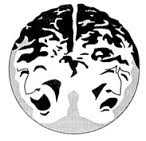
 So, in our view, SAS and ISRE complement each other.
So, in our view, SAS and ISRE complement each other.
As soon as we began to develop SAS, many of our colleagues volunteered to join us. Wendy Mendes put together a fabulous program as chair of our program committee. Our inaugural meeting was held in April 24-26, 2014 in Bethesda, MD, and it was a resounding success, thanks to our colleagues in psychology, neuroeconomics, psychiatry, and neuroscience who volunteered their time to come and participate. We had over 440 attendees. Every session was jam packed with exciting new scientific discoveries. We tried out new programming features like TED-inspired talks, afternoon Salons (where well known scientists were available for informal coffee and chat), and we even had a scientific debate. By all accounts, it was an invigorating event.
With the help of an ever expanding group of colleagues and students, our next meeting will be April 9-11, 2015, in Oakland CA (right next door to Berkeley CA). You can find information about all this at https://society-for-affective-science.org.
And just so we are all clear where my loyalties lie, my ISRE dues are paid up for the next year, and I will be delighted to accept any offers to speak at an upcoming ISRE conference in the future. 😉
What are the emotions you experience more commonly? Would you have been happy in any career other than scientist?
I wear a lot of different hats in a day, and so I experience a lot of different emotions. I am a scientist, responsible for mentoring a lab of 20+ full time researchers, located at two different institutions, in a time of fiscal crisis. My research is considered controversial – fascinating to some and heretical to others. I am the mother of a 16-year-old daughter who is a very keen observer of her parents. I am married to a very funny man (his rendition of the French Taunter scene from Monty Python’s Holy Grail never fails to crack me up) who after 20 years of marriage still loves me. And I have a tight-knit group of the most loyal,  generous group of friends that anyone could ever have. So what emotions do I experience commonly? Love, curiosity, exasperation, irritation, gratitude, desire, confusion, fatigue, inspiration, anxiety, affection.
generous group of friends that anyone could ever have. So what emotions do I experience commonly? Love, curiosity, exasperation, irritation, gratitude, desire, confusion, fatigue, inspiration, anxiety, affection.
I love being a scientist, but I think I also could have been a lawyer. On particularly difficult days, I think about opening an ice cream shop.
What are your hobbies?
Cooking. This is accompanied by a certain affection for kitchen gadgets, well-balanced, very sharp knives, and well-made pots. And a good selection of salts from around the world.
Weight lifting. I have been training with the same personal trainer for the past 10 years. He is the only man who can tell me to get down on my hands and knees and have me oblige.
Gardening. My goal is to leave every patch of land where I have lived more beautiful than how I found it.
Nagging my daughter to clean her room. Enough said.
Reading. It might seem funny for an academic to list reading as a hobby, but I read many different genres of books, and am often reading three or four different books at once. I particularly enjoy reading cookbooks, writing guides, books on philosophy, popular books on physics and natural history, and books on travel. I rely on my close friend, Ann Kring, to recommend the novels that I should read.
Eating chocolate. I have a limitless appreciation for chocolate (preferably dark, and sampled with friends).
For a while I was learning to paint. I was learning to paint in the Dutch realist style (ironic, I think, for a constructionist to learn to paint in a realist style). I was completely absorbed in it, but I had to give it up due to time constraints. I might return to taking lessons again when I retire.
You now live in Boston. What do you like and what do you dislike about the city? What are your three favorite restaurants in Boston? Do you have a favorite recipe to share?
 I love living in Boston. Ocean, mountains – everything is close by – within an hour’s drive. The city has great restaurants, a theatre scene, a small music scene. It’s easy to get around. And I love my house. If I had a complaint, it would be that there are no really good bakeries that are easy to get to. It is very difficult to get good bread and bagels here.
I love living in Boston. Ocean, mountains – everything is close by – within an hour’s drive. The city has great restaurants, a theatre scene, a small music scene. It’s easy to get around. And I love my house. If I had a complaint, it would be that there are no really good bakeries that are easy to get to. It is very difficult to get good bread and bagels here.
I don’t really have “favorite” restaurants. Or perhaps I should say my “favorites” shift depend on what I feel like eating. It’s probably easier to ask me which restaurants I don’t like.
If I am in the mood for steak frites, then I love my neighborhood restaurant, Lumiere in Newton. If Thai food will hit the spot, then I like Dok Bua in Brookline. For dim sum, it is Hei La Moon in Chinatown. For roast chicken, it would have been a Boston institution called Hamersley’s Bistro in the South End, but they just closed. So now I would opt for the chicken at Lumiere. For pasta, it is a small neighborhood place in the South End called Coppa. For oysters, it would be B&G Oysters (South End again) or Row 34 (Fort Point) unless you want to make the two hour drive to Rhode Island, in which case THE BEST place for oysters is the Matunuck Oyster Bar in South Kingston Rhode Island. The restaurant is right beside the river holding the oyster beds. For fine dining, it would be a toss-up between No. 9 Park (Beacon Hill) and Menton (Fort Point), both run by the this amazing chef named Barbara Lynch. For donuts, it would be Union Square Donuts (in Somerville); the members of my wonderful lab celebrated my birthday this year with Union Square donuts (get the brown butter hazelnut crunch). For burgers, there is this little take out joint near my house called Lee’s Burgers. Really, really yum. The fries are not bad either.
 I’ve compiled a cookbook of the recipes that use on a regular basis, and I share it with my lab each year. Here is a recipe that I concocted when I first moved to Boston and could not find a decent challah that I was happy with. Sometimes, on Fridays, they sell it at our local bakery as “Dr. Barrett’s Challah.”
I’ve compiled a cookbook of the recipes that use on a regular basis, and I share it with my lab each year. Here is a recipe that I concocted when I first moved to Boston and could not find a decent challah that I was happy with. Sometimes, on Fridays, they sell it at our local bakery as “Dr. Barrett’s Challah.”
Challah Recipe
| 4 | cups flour |
| 1 | teaspoon table salt |
| 21/4 | teaspoons dry active yeast |
| 1/2 | cup sugar |
| 1/4 | cup olive oil |
| 2/3 | Cup warm water |
| 4 | eggs |
Instructions

- Warm water in microwave (lukewarm). Stir in yeast. Let stand until foamy (a few minutes).
- Stir together flour, sugar, salt in a mixing bowl (or in bowl for electric mixer).
- In a separate bowl, whisk oil, 2 eggs, 2 egg yolks, plus water/yeast mixture. Pour egg mixture into the flour mixture. Mix with spoon (or paddle attachment) for a minute, until ingredients are fully mixed.
- Cover and let rest for 20 min.
- Kneed for 10 minutes by hand (or 6 minutes on med low speed with dough hook). Sprinkle in more flour if needed to make dough soft, subtle, but not sticky.
- Remove from bow. Shape into boule. Coat with oil and place in clean bowl. Cover with plastic wrap. Let rise for an hour to two hours.
- Punch down and let rise for another hour (optional).
- Divide and braid.
- Preheat oven to 400 degrees F.
- Cover with cloth and let rise for 45 min (optional).
- Whip remaining egg whites until frothy and paint over braided dough.
- Place bread in oven and spray oven with water (30-40 sprays).
- Bake for 30 minutes.
And of course I must offer you something chocolate. This is a chocolate cake from Hamersley’s Bistro. I once threw a party just so I could make this cake. Consider it your secret weapon (if you need a great, but easy to make chocolate cake):
Chocolate Cake Recipe
| 8 oz | bittersweet chocolate, chopped (like Guittard or Valrhona) |
| 4 oz | unsweetened chocolate, chopped |
| 16 Tbs | unsalted butter plus more for greasing pan (make sure it is European which has a higher fat content) |
| ½ cup | hot brewed espresso |
| 1 tsp | kosher salt |
| 1 tsp | vanilla extract |
| 5 | large eggs |
| ½ cup | sugar |
| 1 ½ Tbs | all purpose flour |
Instructions
Heat oven to 350F. Cut a piece of parchment paper to fit bottom of a 9 inch round cake pan. Line bottom of pan with parchment and then butter the paper.
Set a medium heatproof glass or stainless steel bowl over a pan of simmering water so that the bottom of the bowl fits snugly without touching the water (or use a double boiler if you have one). Melt chocolate and butter over simmering water. Remove bowl from heat. Add coffee, salt, and vanilla. Don’t overheat or chocolate will seize (and then you must start again with new chocolate).
In a stand mixer with a whisk attachment, beat eggs and sugar together until the mixture lightens and begins to hold ribbons, 3-4 min. Fold eggs into chocolate mixture. Stir in flour.
Pour batter into prepared pan. Set the cake pan into a larger baking pan or roasting pan and add hot water to larger pan to fill about 1 inch deep. Bake until care is mostly set with slight jiggle in center, about 40-45 min. Remove cake from water bath and let cool until cold. Run a thin knife around the inside of the cake pan. Invert it onto a regular plate, remove the parchment, and invert it again on to a serving plate. Serve at room temperature.
Bon appetit.
What are you working on these days?
I am writing a popular book on emotion to be published by Houghton Mifflin Harcourt. Tentative title: How emotions are made. 
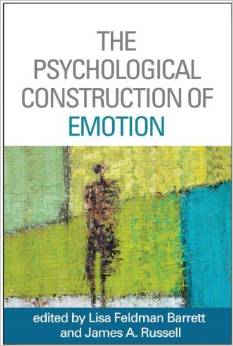 Publication will be sometime in 2016.
Publication will be sometime in 2016.
I am editing the 4th Edition of the Handbook of Emotion with Michael Lewis and Jeannette Haviland-Jones for Guilford Press.
Jim Russell and I have a new edited volume on the Psychological Construction of Emotion (the first of its kind), also published by Guilford. It is now available for purchase.
Please list a handful of articles or books that have had a deep influence on your thinking.
Darwin, C. (1964). On the origin of species [Facsimile of 1st ed.]. Cambridge, MA: Harvard University Press. (Original work published 1859)
Danziger, K. (1997). Naming the mind: How psychology found its language. London: Sage.
Edelman, G. (1987). Neural Darwinism: The theory of neuronal group selection. New York, NY: Basic Books.
Mayr, E. (2004). What makes biology unique? New York, NY: Cambridge University Press.
Lewontin, R. C. (2000). The triple helix: Gene, organism and environment. Cambridge, MA: Harvard University Press
Searle, J. R. (1995). The construction of social reality. New York, NY: Free Press.
Sporns, O. (2011). Networks of the brain. Cambridge, MA: Harvard University Press
Striedter, G. F. (2005). Principles of brain evolution. Sutherland, MA: Sinauer Associates
What do you think is the main question that future affective science should be focusing on?
The study of emotion will be best served by building bridges between silos like affective science, cognitive science, and so on. The only way to really understand the nature of emotion is to understand how the brain creates the mind, according to the big questions: What is the functional architecture of the brain, and how are conscious mental states created within this architecture? What are the nature of concepts and categories? Developmentally, when does a human brain become equipped with the circuitry to learn an emotion concept? Do infants learn emotion concepts the way they learn other abstract concepts? What role do words play? How do words and concepts influence how the brain is wired? If the sensory inputs from the body to the brain (called ascending homeostatic sensory inputs) are specific enough to keep the body well-regulated, then why is interoception so poor? Does this help explain why people have difficulty distinguishing certain types of pain from stress, and emotion? Is core affect a form of core knowledge? Does it really function as a common currency? In everyday settings and contexts, how much variation (or constancy) is there within an emotion category for a given person? Across individuals within the same culture? Across cultures?
I am also curious to understand what leads people to essentialize psychological categories, like emotion categories, leading them to assume that they are natural kinds. It is well known that essentialism interferes with scientific understanding in biology. It keeps people from understanding concepts like natural selection. For natural selection to work as a force in evolution, it required sufficient variation so that certain forms can be selected to survive and others not, depending on the immediate circumstances. This is not just passing down unchanging “essences” through the ages (like Lamarkian evolution) (for an explanation, see work by Susan Gelman). In my view, essentialism has interfered with scientific progress in the study of emotion. To figure out why this happened, and to find a remedy, would be an interesting scientific project in and of itself.
References
Arnold, M. B. (1960a). Emotion and personality: Vol. 1. Psychological aspects. New York: Columbia University Press.
Arnold, M. B. (1960b). Emotion and personality: Vol. 2. Physiological aspects. New York: Columbia University Press.
Barrett, L. F. (2006a). Emotions as natural kinds? Perspectives on Psychological Science, 1, 28-58.
Barrett, L.F. (2006b). Solving the emotion paradox: Categorization and the experience of emotion. Personality and Social Psychology Review, 10, 20-46.
Barrett, L. F. (2009a). The future of psychology: Connecting mind to brain. Perspectives in Psychological Science, 4, 326-339.
Barrett, L. F. (2011). Was Darwin wrong about emotional expressions? Current Directions in Psychological Science, 20, 400-406.
Barrett, L. F. (2012). Emotions are real. Emotion, 12, 413-429
Barrett, L. F. (2013). Psychological construction: A Darwinian approach to the science of emotion. Emotion Review, 5, 379-389.
Barrett, L. F. (2014). The conceptual act theory: A précis. Emotion Review, 6, 292-297.
Barrett, L. F. (2015). Construction as an integrative framework for the science of emotion. Chapter to appear in L. F. Barrett and J. A. Russell (Eds.), The psychological construction of emotion. New York: Guilford.
Barrett, L. F. (2015). Ten common misconceptions about the psychological construction of emotion. Chapter to appear in L. F. Barrett and J. A. Russell (Eds.), The psychological construction of emotion. New York: Guilford.
Barrett, L. F., & Satpute, A. B. (2013). Large-scale brain networks in affective and social neuroscience: Towards an integrative architecture of the human brain. Current Opinion in Neurobiology, 23, 361-372.
Barrett, L.F. (2011). Bridging token identity theory and supervenience theory through psychological construction. Psychological Inquiry, 22, 115-127.
Barrett, L. F., Lindquist, K., Bliss-Moreau, E., Duncan, S., Gendron, M., Mize, J., & Brennan, L. (2007). Of mice and men: Natural kinds of emotion in the mammalian brain? Perspectives on Psychological Science, 2, 297-312.
Barrett, L. F., Mesquita, B., Ochsner, K. N., & Gross, J. J. (2007). The experience of emotion. Annual Review of Psychology,58, 373-403.
Barrett, L. F., & Russell, J. A. (Eds.) (2015). The psychological construction of emotion. New York: Guilford.
Bruner, J. S., & Tagiuri, R. (1954). The perception of people. In G. Lindzey (Ed.), Handbook of social psychology (Vol. 2, pp. 634–654). Cambridge, MA: Addison-Wesley.
Clore, G. L., & Ortony, A. (2013). Psychological construction in the OCC model of emotion. Emotion Review, 5, 335–343
Duffy, E. (1934a). Is emotion a mere term of convenience? Psychological Review, 41, 103–104.
Duffy, E. (1934b). Emotion: An example of the need for reorientation in psychology. Psychological Review, 41, 184–198.
Duffy, E. (1941). An explanation of “emotional” phenomena without use of the concept
Dunlap, K. (1932). Are emotions teleological constructs? American Journal of Psychology, 44, 572–576.
Edelman, G.M. & Gally, J.A. Degeneracy and complexity in biological systems. Proc. Natl. Acad. Sci. USA 98, 13763–13768 (2001).
Ekman, P., & Cordaro, D. (2011). What is meant by calling emotions basic? Emotion Review, 3, 364–370.
Ekman, P. (1972). Universals and cultural differences in facial expressions of emotion. In J. Cole (Ed.), Nebraska symposium on motivation, 1971 (pp. 207–283). Lincoln, NE: University of Nebraska Press
Gendron, M., Roberson, D., van der Vyver, J. M., & Barrett, L. F (2014). Cultural relativity in perceiving emotion from vocalizations. Psychological Science, 25, 911-920.
Gendron, M., Roberson, D., van der Vyver, J. M., & Barrett, L. F (2014). Perceptions of emotion from facial expressions are not culturally universal: Evidence from a remote culture. Emotion, 14, 251-262.
Gilbert, D.T. (1998). Ordinary personology. In D.T. Gilbert, S.T. Fiske, & G. Lindzey (Eds.), The handbook of social psychology (4th ed., pp. 89–150). New York: Oxford University Press.
Gould, S. J., Lewontin R. C. (1979). The spandrels of San Marco and the Panglossian Paradigm: A critique of the adaptationist programme. Proceedings of the Royal Society of London, Series B, 205, 581-598.
Gross, J. J., & Barrett, L. F. (2011). Emotion generation and emotion regulation: One or two depends on your point of view. Emotion Review, 3, 8-16.
Gross, C. T., & Canteras, N. S. (2012). The many paths to fear. Nature Reviews Neuroscience, 13, 651–658
Guillory, S. A., & Bujarski, K. A. (2014) Exploring emotions using invasive methods: Review of 60 years of human intracranial electrophysiology. Social Cognitive Affective Neuroscience. Epub: March 20, 2014 doi:10.1093/scan/nsu002
Harlow, H. F., & Stagner, R. (1932). Psychology of feelings and emotions: I. Theory of feelings. Psychological Review, 39, 570–589.
Harlow, H. F., & Stagner, R. (1933). Psychology of feelings and emotions: II. Theory of emotions. Psychological Review, 40, 184–195.
Hunt, W. A. (1941). Recent developments in the field of emotion. Psychological Bulletin, 38, 249–276.
Izard, C. E. (1977). Human emotions. New York: Springer.
Kassam, K. S., Markey, A. R., Cherkassky, V. L., Loewenstein, G., & Just, M. A. (2013). Identifying emotions on the basis of neural activation. PLos ONE, 8(6), e66032
Kober, H., Barrett, L. F., Joseph, J., Bliss-Moreau, E., Lindquist, K. A., & Wager, T. D. (2008). Functional networks and cortical-subcortical interactions in emotion: A meta-analysis of neuroimaging studies. Neuroimage, 42, 998-1031.
Laland, K. N., & Brown, G. R. (2002). Sense and nonsense: Evolutionary perspectives on human behavior. New York: Oxford University Press.
Lazarus, R. S. (1991). Emotion and adaptation. New York, NY: Oxford University Press.
Lindquist, K. A., Wager, T. D., Kober, H., Bliss-Moreau, E., & Barrett, L. F. (2012). The brain basis of emotion: A meta-analytic review. Behavioral and Brain Sciences, 35, 121-143.
Mandler, G. (1975). Mind and emotion. New York: Wiley.
Mayr, E. (2004). What makes biology unique? New York, NY: Cambridge University Press.
Ortony, A., & Turner, T. J. (1990). What’s basic about basic emotions? Psychological Review, 97, 315–331.
Posner, M. I., & Keele, S. W (1968). On the genesis of abstract ideas. Journal of Experimental Psychology 77, 353-363
Raz, G., Touroutoglou, A., Wilson-Mendenhall, C., Gilam, G., Lin, T., Gonen, T., Jacob, Y., Atzil, S., Admon, R., Bleich-Cohen, M., Maron-Katz, A., Hendler, T., & Barrett, L. F. (under review).Stimulus-induced functional connectivity dynamics reveal common networks for different emotions.
Roseman, I. J. (1991). Appraisal determinants of discrete emotions. Cognition & Emotion, 5, 161–200.
Roseman, I. J. (2011). Emotional behaviors, emotivational goals, emotion strategies: Multiple levels of organization integrate variable and consistent responses. Emotion Review, 3, 1–10.
Russell, J. A. (2003). Core affect and the psychological construction of emotion. Psychological Review, 110, 145–172.
Scherer, K. R. (2009). The dynamic architecture of emotion: Evidence for the component process model. Cognition & Emotion, 23, 1307–1351.
Smith, C. A., & Ellsworth, P. C. (1985). Patterns of cognitive appraisal in emotion. Journal of Personality and Social Psychology, 48, 813_838.
Tomkins, S. (1962). Affect, imagery, consciousness, Volume I: The positive affects. New York, NY: Springer.
Tomkins, S. (1963). Affect, imagery, consciousness, Volume II: The negative affects. New York, NY: Springer.
Touroutoglou, A., Lindquist, K. A., Dickerson, B. C., & Barrett, L. F. (under review). Using intrinsic connectivity analyses to compare competing theories of emotion.
Valenstein, E.S. (1973). Brain control. New York: Wiley
Vallacher, R. R., & Wegner, D. M. (1987). What do people think they’re doing? Action identification and human behavior. Psychological Review, 94, 3–15.
Wager, T. D., Kang, J., Johnson, T. D., Nichols, T. E., Satpute, A. B., & Barrett, L. F. (under review). A Bayesian model of category specific emotional brain response.
Wilson-Mendenhall, C. D., *Barrett, L. F., *Simmons, W. K., Barsalou, L. W. (2011). Grounding emotion in situated conceptualization. Neuropsychologia, 49, 1105-1127.
Wilson-Mendenhall, C., *Barrett, L. F., & *Barsalou, L. W. (2014). Variety in emotional life: Within-category typicality of emotional experiences is associated with neural activity in large-scale brain networks. Social Cognitive and Affective Neuroscience. Epub ahead of print Feb 21, 2014. doi: 10.1093/scan/nsu037




